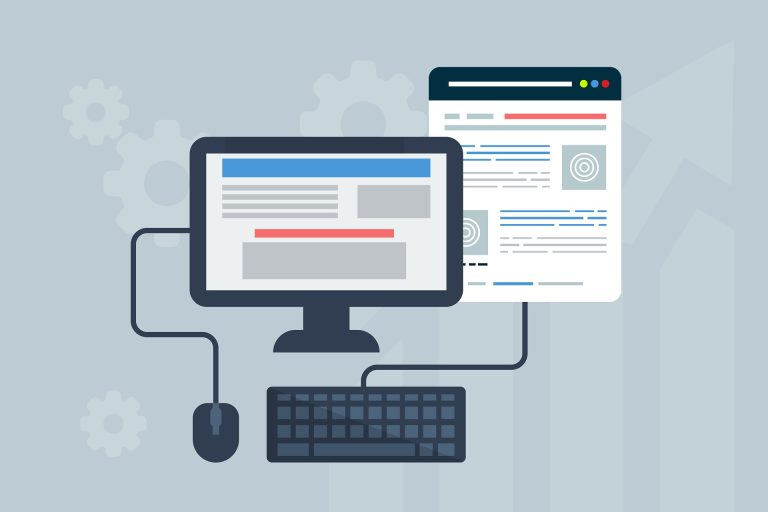The cloud transformation journey is a process of moving applications and data from on-premises servers to the cloud. It is a complex process that involves multiple steps.
Cloud Transformation Steps
Shifting an application from a desktop to a cloud platform involves several steps, including:
- Assessment of the existing application: Analyze the existing application’s architecture, data, dependencies, and scalability requirements.
- Cloud Readiness Assessment: Evaluate the cloud environment to determine which cloud platform (e.g., Amazon Web Services, Microsoft Azure, Google Cloud Platform) is best suited for the application.
- Migration Planning: Plan the migration process, including identifying and resolving any compatibility issues and defining the steps for data migration.
- Data Migration: Migrate the data from the existing application to the cloud platform.
- Application Deployment: Deploy the application on the cloud platform, taking into account the scalability and security requirements.
- Testing: Test the application on the cloud platform to ensure it meets all requirements and functions as expected.
- Monitoring and Maintenance: Monitor the application on the cloud platform and implement maintenance processes to keep it running smoothly.
Application Assessment
To assess an existing application for cloud readiness, things to consider are:
Architecture: Evaluate the architecture of the application to determine whether it can be easily adapted to run in a cloud environment. Consider factors such as the application’s scalability, resilience, and security requirements.
Data: Assess the data used by the application to determine whether it can be stored and processed in the cloud. Consider the size, structure, and format of the data, as well as any regulatory requirements for data storage.
Dependencies: Identify any dependencies the application has, such as external systems, libraries, or services, and determine whether they are compatible with the cloud environment.
Performance: Evaluate the performance of the application to determine whether it meets the desired level of performance in the cloud environment.
Cost: Consider the cost of running the application in the cloud, including both the cost of cloud infrastructure and the cost of any necessary modifications to the application.
Security: Assess the security requirements of the application and determine whether they can be met in the cloud environment.
Support: Evaluate the level of support needed for the application and determine whether the cloud platform provides the necessary support.
By assessing these factors, you can gain a better understanding of the application’s cloud readiness and the necessary steps to take to ensure a successful migration to the cloud.
Cloud readiness assessment
The steps involved in a cloud readiness assessment are:
- Business Requirements: Identify the business requirements for the application and determine whether they can be met in a cloud environment.
- Application Assessment: Evaluate the existing application, including its architecture, data, dependencies, and performance, to determine its cloud readiness.
- Cloud Environment Assessment: Evaluate the cloud environment to determine which cloud platform is best suited for the application. Consider factors such as cost, security, performance, and support.
- Compliance Assessment: Evaluate any regulatory or compliance requirements that the application must meet and determine whether the cloud environment can support these requirements.
- Technical Assessment: Assess the technical requirements of the application, including compatibility with cloud platforms, scalability, and security.
- Cost Assessment: Estimate the costs of migrating the application to the cloud and running it in the cloud environment.
- Risk Assessment: Identify any potential risks associated with migrating the application to the cloud and determine how they can be mitigated.
By following these steps, you can gain a comprehensive understanding of the application’s cloud readiness and the necessary steps to take to ensure a successful migration to the cloud.
Migration Plan
Things to consider planning the migration of an application to the cloud:
Define the goals and objectives: Clearly define the goals and objectives for the migration, including the desired outcomes and timeline for the project.
Identify the migration strategy: Determine the best migration strategy for the application, taking into account factors such as the size of the application, the complexity of the data, and the requirements for scalability and availability.
Create a project plan: Develop a detailed project plan that outlines the steps required for the migration, including data migration, application deployment, and testing.
Assess the impact on users: Assess the impact of the migration on users and stakeholders, including any potential downtime, and develop a communication plan to keep them informed of the progress of the migration.
Evaluate the costs: Estimate the costs of the migration, including the cost of cloud infrastructure, data migration, and any necessary modifications to the application.
Test the migration process: Test the migration process in a staging environment to ensure that it works as expected and to identify and resolve any issues before the production migration.
Monitor the migration: Monitor the migration process to ensure that it progresses as planned and to identify and resolve any issues that arise during the migration.
Implement a post-migration plan: Develop a post-migration plan that includes ongoing monitoring and maintenance processes to keep the application running smoothly in the cloud.
Cloud deployment and testing
Things to consider during cloud deployment and testing:
Scalability: Ensure that the application can scale to meet changing demand, and that the cloud infrastructure is configured to support this.
Security: Ensure that the application and data are secure in the cloud environment, and that the necessary security measures, such as encryption and authentication, are in place.
Performance: Ensure that the application performs as expected in the cloud environment, and that any necessary performance optimization measures are in place.
Data Management: Ensure that the data is properly managed in the cloud, including backup and recovery processes.
Cost: Ensure that the cost of running the application in the cloud is within budget, and that the cost of ongoing maintenance and support is manageable.
Compliance: Ensure that the application meets any regulatory or compliance requirements, such as data privacy and security regulations.
User Experience: Ensure that the user experience is positive and that the application is accessible and easy to use.
Integration: Ensure that the application integrates seamlessly with any other systems or services it relies on, such as databases or APIs.
Testing: Test the application thoroughly in the cloud environment to ensure that it meets all requirements and functions as expected.
By considering these factors during cloud deployment and testing, you can ensure that the application is ready for production use and that it meets the needs of your users and stakeholders.
Cloud application monitoring and maintenance
A successful cloud application monitoring and maintenance strategy should include the following elements:
- Performance Monitoring: Continuously monitor the performance of the application and the underlying infrastructure to ensure that it meets performance and availability requirements.
- Log Management: Collect and analyze log data from the application and infrastructure to identify potential issues and to support troubleshooting and problem resolution.
- Alerting and Notification: Configure alerts and notifications to notify administrators of potential issues or outages, allowing them to respond quickly to resolve problems.
- Security Monitoring: Continuously monitor the application and infrastructure for security threats, and implement security measures to prevent and mitigate these threats.
- Resource Optimization: Optimize the use of cloud resources to minimize costs and improve efficiency.
- Patch Management: Regularly apply security patches and software updates to ensure that the application and infrastructure are up-to-date and secure.
- Backup and Recovery: Implement a robust backup and recovery strategy to protect data and ensure that the application can be recovered in the event of a failure or disaster.
- Continuous Integration and Deployment: Automate the build, testing, and deployment process to reduce the time required to deploy new updates and features.
- Technical Support: Provide technical support to users, including troubleshooting and problem resolution, to ensure that the application is always available and functioning as expected.
By implementing a comprehensive monitoring and maintenance strategy, you can ensure that your cloud application is always available, secure, and performing optimally, and that any issues are resolved quickly and effectively.
It’s important to note that migrating an application to the cloud can be a complex process, and it’s advisable to work with an experienced cloud migration provider to ensure a successful outcome. Please contact Simplified Solution for advice and support.




